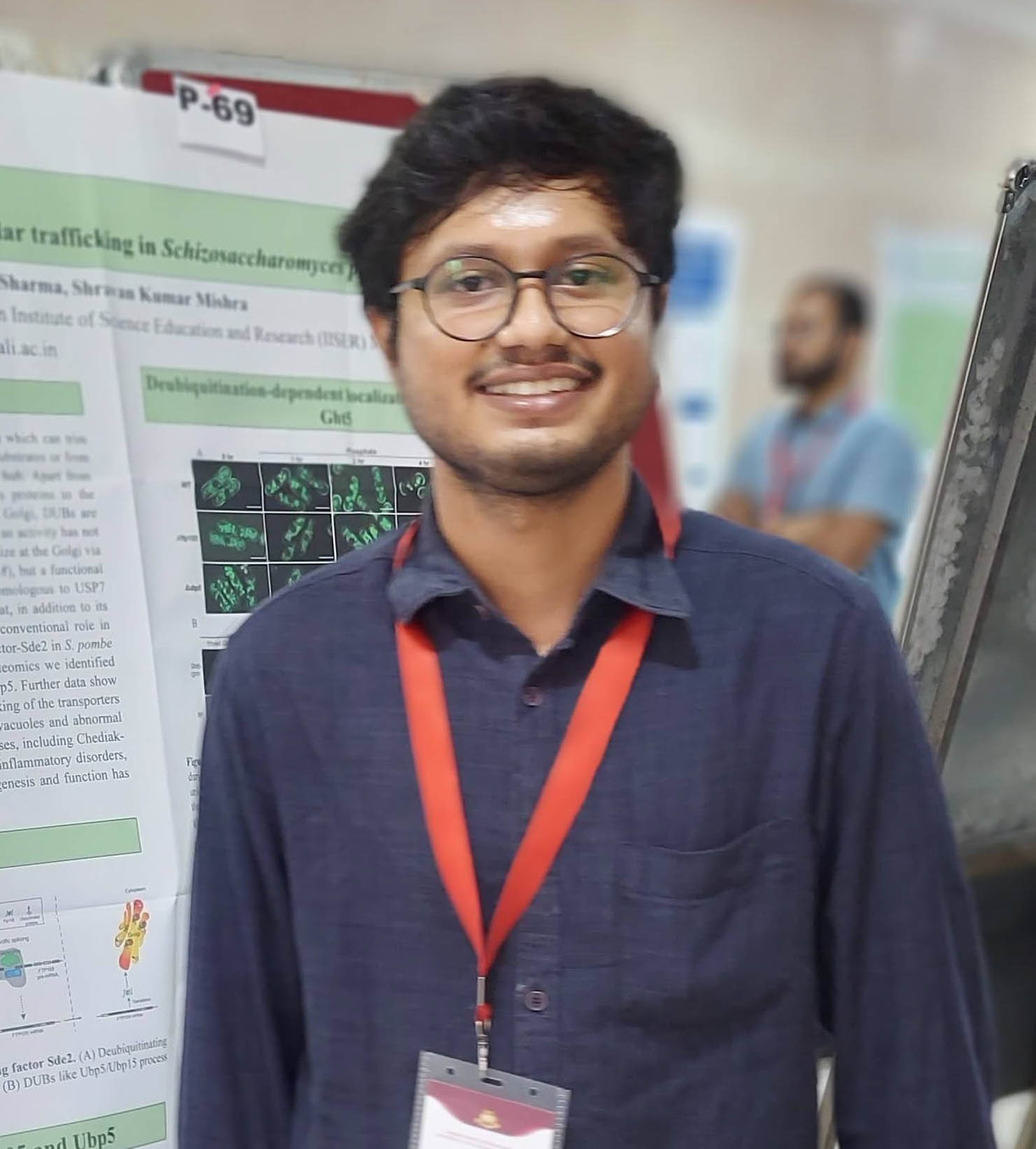Shravan Kumar Mishra
Associate Professor
Research
We use molecular biology, genetics, and biochemistry approaches in the budding yeast Saccharomyces cerevisiae and the fission yeast Schizosaccharomyces pombe to study functions of proteins related to ubiquitin in cell division, pre-mRNA splicing, heterochromatin formation and intracellular trafficking. A few ongoing projects are listed below: Ubiquitin-like proteins in intron-specific splicing and alternative splicing: The process of pre-mRNA splicing through spliceosome is understood well. Its regulation is essential for intron-specific splicing and alternative splicing. We study the role of the ubiquitin-like proteins Hub1 and Sde2 in these processes. Molecular evolution of the ubiquitin fold in Sde2: Multiple evidence suggests that the ubiquitin fold in the intron-specific pre-mRNA splicing factor Sde2 likely originated from ubiquitin. Can its origin be traced through experiments? Function of AAA-ATPases: These enzymes are known to play modulatory roles in a large number of cellular machineries. We study their role in cell division. Intracellular signalling from Golgi to the nucleus: How Golgi communicates with the nucleus? Is this communication mediated via intron-specific splicing, and whether ubiquitin-like proteins and deubiquitinating enzymes (DUBs) participate in the signalling? We study the roles of these molecules in the trafficking and degradation of transporters of nutrients, such as glucose and phosphate. Deubiquitinating enzymes (DUBs) in cellular trafficking: The reversible process of ubiquitination plays a central role in regulating vesicular trafficking in the cell. Although the activities of E3 ubiquitin ligases that attach ubiquitin to protein substrates are well documented, the roles of DUBs that remove ubiquitin are yet to be studied.









